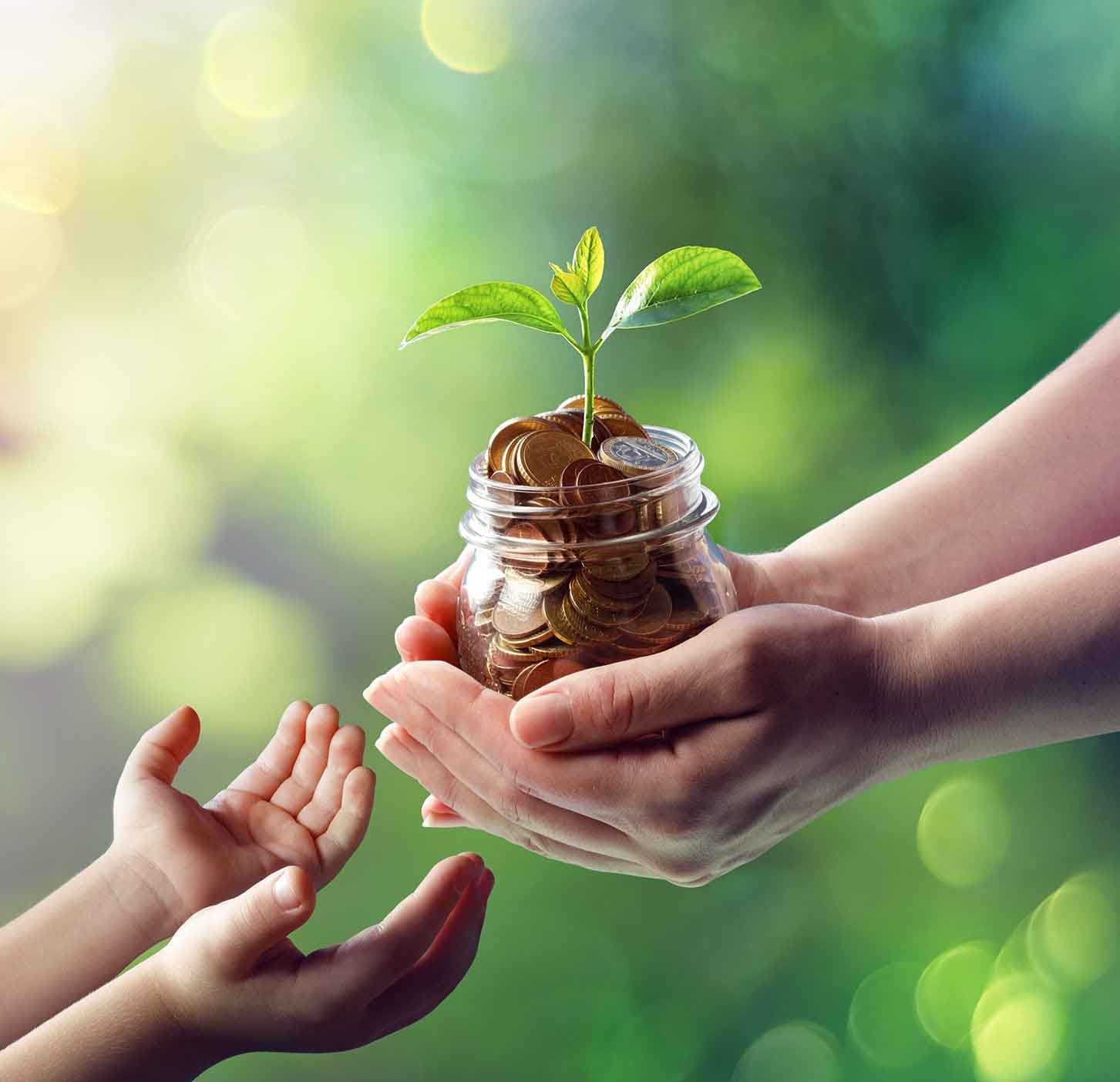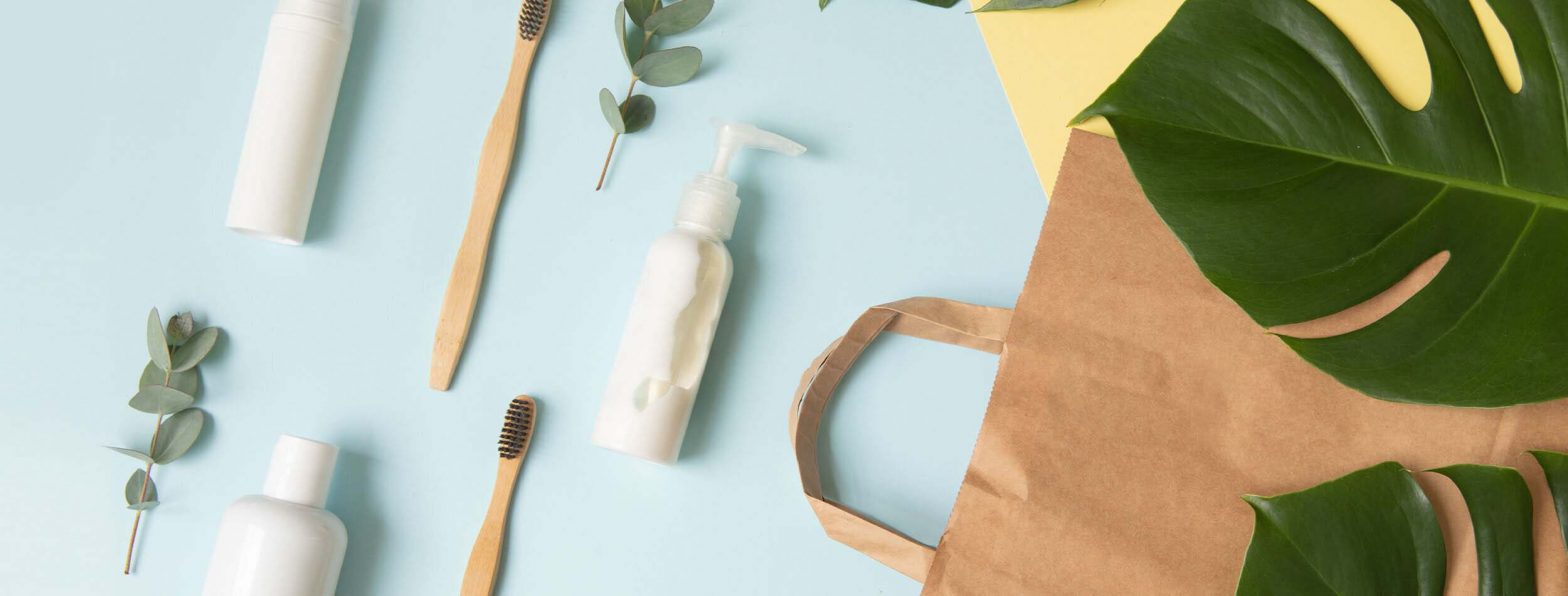Both brands and consumers benefit from the power of sustainable packaging, from saving our planet to saving money to saving brand image.
Brands have made a huge shift to fit into the sustainable world as consumers are demanding transparency when it comes to ingredients, sourcing, manufacturing, and packaging. To understand the powerful impact sustainable packaging has, we must first understand what sustainable packaging is.
What Is Sustainability?
Sustainability is a word that’s been thrown around quite a bit these days without a comprehensive understanding of what it actually means.
According to the US Environmental Protection Agency, “Sustainability creates and maintains the conditions under which humans and nature can exist in productive harmony, that permit fulfilling the social, economic, and other requirements of present and future generations.” In other words, a sustainable industry is one which is in “equilibrium with its environment.”
What are Sustainable Materials?
Companies that are either utilizing sustainable materials or interested in shifting their business model can take advantage of new options that are in constant development. What didn’t exist yesterday is suddenly a possibility today.
What makes these materials sustainable is the ability to produce specific volumes without “depleting non-renewable resources and without disrupting the established steady-state equilibrium of the environment and key natural resource systems.”
Consumers are closely monitoring and dissecting what the ingredients and the materials used in their products are along with where they’re from. They are creating “reusable, refillable products, from perfume bottles to deodorant sticks.”
Whether the industry is health and wellness, beauty, construction, technology, fashion and beyond, sustainable materials are readily available.
What Is Sustainable Packaging?
Sustainable packaging has been manufactured from sustainable materials using energy from renewable sources. It’s safer for the environment and decreases our ecological footprint.
There are actually multiple guidelines out there from various sources, which makes it difficult for companies who want to follow the sustainable packaging rules. It also opens up opportunities for brands to mislead consumers.
The Sustainable Packaging Coalition names eight criteria for sustainable packaging. Below are a few from that list:
- Is sourced, manufactured, transported, and recycled using renewable energy.
- Is effectively recovered and utilized in biological and/or industrial cradle-to-cradle cycles.
- Is physically designed to optimize materials and energy.
Below are a few of the five principles The US Environmental Protection Agency identifies as sustainable packaging:
- Use less material
- Eliminate toxic constituents
- Make packaging more readily recyclable
Other “rules” we found include:
- Uses raw 100% recycled or raw materials
- Is manufactured using clean production technologies and best practices
- Minimizes the production process, supply chain, and carbon footprint
What Are the Latest Trends in Packaging?
As more and more companies are working towards environmentally focused business planning, there are now many innovations supporting practical, sustainable packaging, thanks to advances in technology in the plastic packaging industry.
Some big brand examples of sustainable packagers include WalMart and McDonalds. By 2025, Walmart aims to have 100% recyclable, reusable, or compostable packing and McDonald’s also announced its packaging will be 100% renewable and recycled by 2025.
There are many reasons why brands are turning to sustainable packing:
- Corporate social responsibility
- Reducing carbon footprints
- Reducing waste
- Increasing sales
What Do Consumers Think About Sustainable Packaging?
Consumers, especially the younger generations, are demanding that brands take more of a role and responsibility in protecting the environment. New research tells us that consumers are “carefully considering company sustainability practices before purchasing.”
Brands need to listen and shift to sustainable practices if they want to keep their customers coming back. Consumers aren’t going to support companies who aren’t on board the environmental train. In fact, 61% of consumers say they’re likely to switch to a brand that is more environmentally friendly than their current brand.
These consumers are willing to spend their hard-earned money on a cause they believe in and on products that are in line with their beliefs. By 2021, U.S. consumers are estimated to spend $150 billion on sustainable products with increased willingness to pay a premium for such goods.
Sustainablejungle.com says, “It’s never been easier to be a conscious consumer.” Unfortunately, not all companies understand the true meaning of sustainability, especially when it comes to packaging. When they target environmentally conscious consumers and aren’t always honest with their processes, this is known as greenwashing, These days, consumers simply won’t tolerate it.
Consumers want honesty and transparency, and if you’re not willing to share it all, those consumers will go somewhere else.
What Are the Benefits of Sustainable Packaging?
When the number of packaging materials is decreased, CO2 emissions are reduced, which impacts global warming and climate change. Aside from helping the environment and catering to consumer’s demand for more transparency, businesses are shifting to sustainable packaging to capitalize on their corporate responsibility.
Consumers who will only purchase from companies that offer sustainable packaging and other eco-friendly methods will increase sales as they are a new market to convert.
- Sustainable packaging is easier to create, reducing labor and material costs from waste.
- Lighter packaging is more cost-effective and more efficient.
- A shift to sustainable practices improves brand image.
The Proof Is in the Packaging
Our company, Greenfield Groves, is making it difficult for other brands to keep up with as we believe both corporate and social commitments are imperative to any company that’s creating products and services these days.
One of our consumer brands, Herban Goods, offers whole-house consumer packaged goods and telehealth services, and is the poster child for sustainable packaging.
Our Founder, Lindsay Giguiere and her team are “committed to creating distinctive, yet eco-friendly packaging including all of its bottles and jars, tubes, baggies, caps, sleeves, bulbs, pipettes container boxes, shipping boxes, packing tape, inserts, and labels.”
How do they do it? With core elements of sustainable packaging that are strictly enforced and shared with their consumers. Below are just a few they live by.
- Overall sustainability is not a corporate goal, but rather a corporate directive
- Green farming practices from planting to cultivation to harvest
- Use of alternative energies in growing, harvesting, curing, extraction, and manufacturing practices
- Use of electric vehicles in the logistics of supply chain
- Employee incentives for use of electric vehicles and commitment to sustainable work-place practices
- Keen focus on glass (not plastic), naturally sourced paper, elimination of petroleum-based product packaging, elimination of items such as plastic spatulas, overcaps, lid inserts, extra product literature, and cleansing cloth towels
The power of sustainable packaging is immense and when truly performed correctly, businesses, consumers, and most importantly, the environment, all “reap” the rewards. Pun intended.














